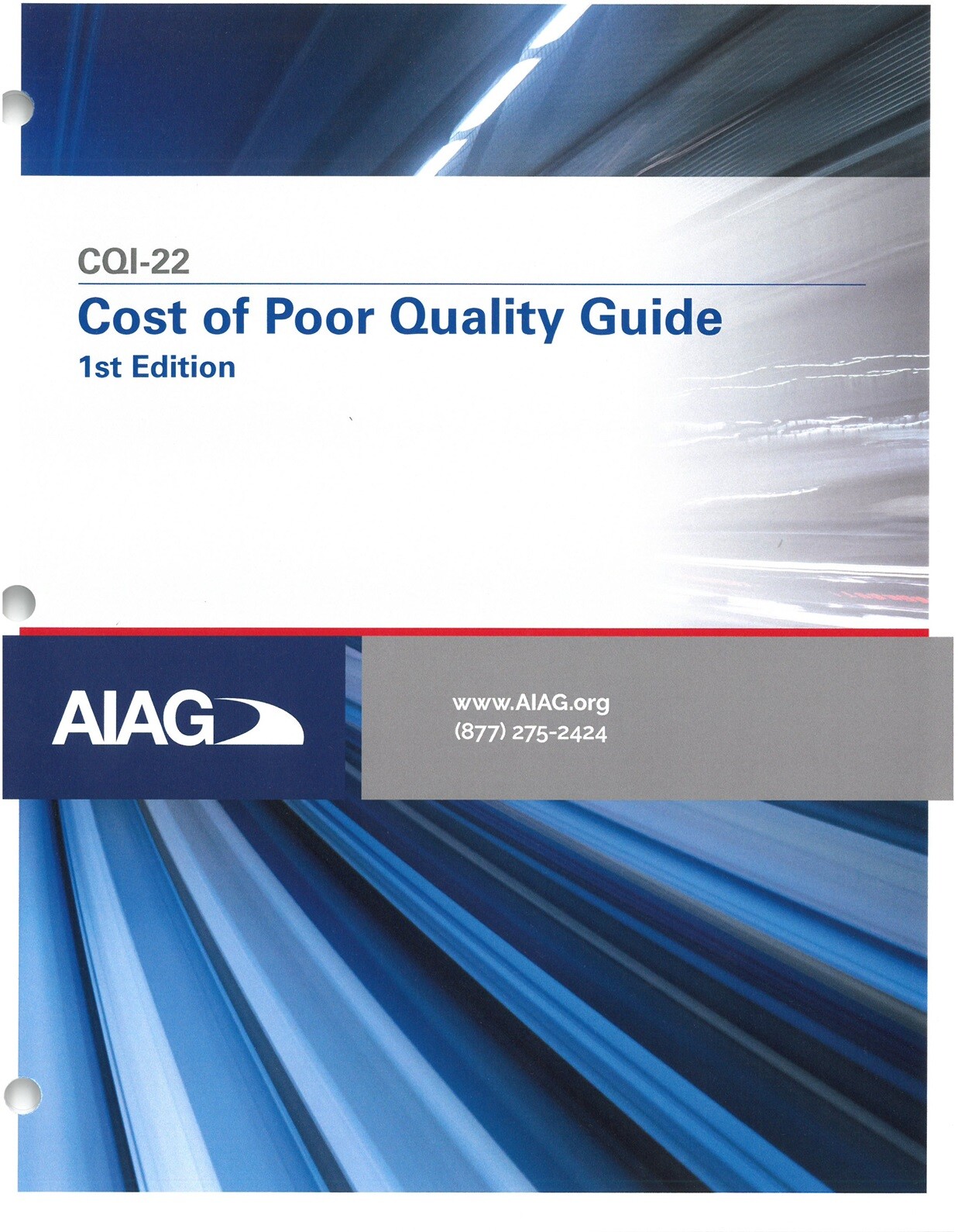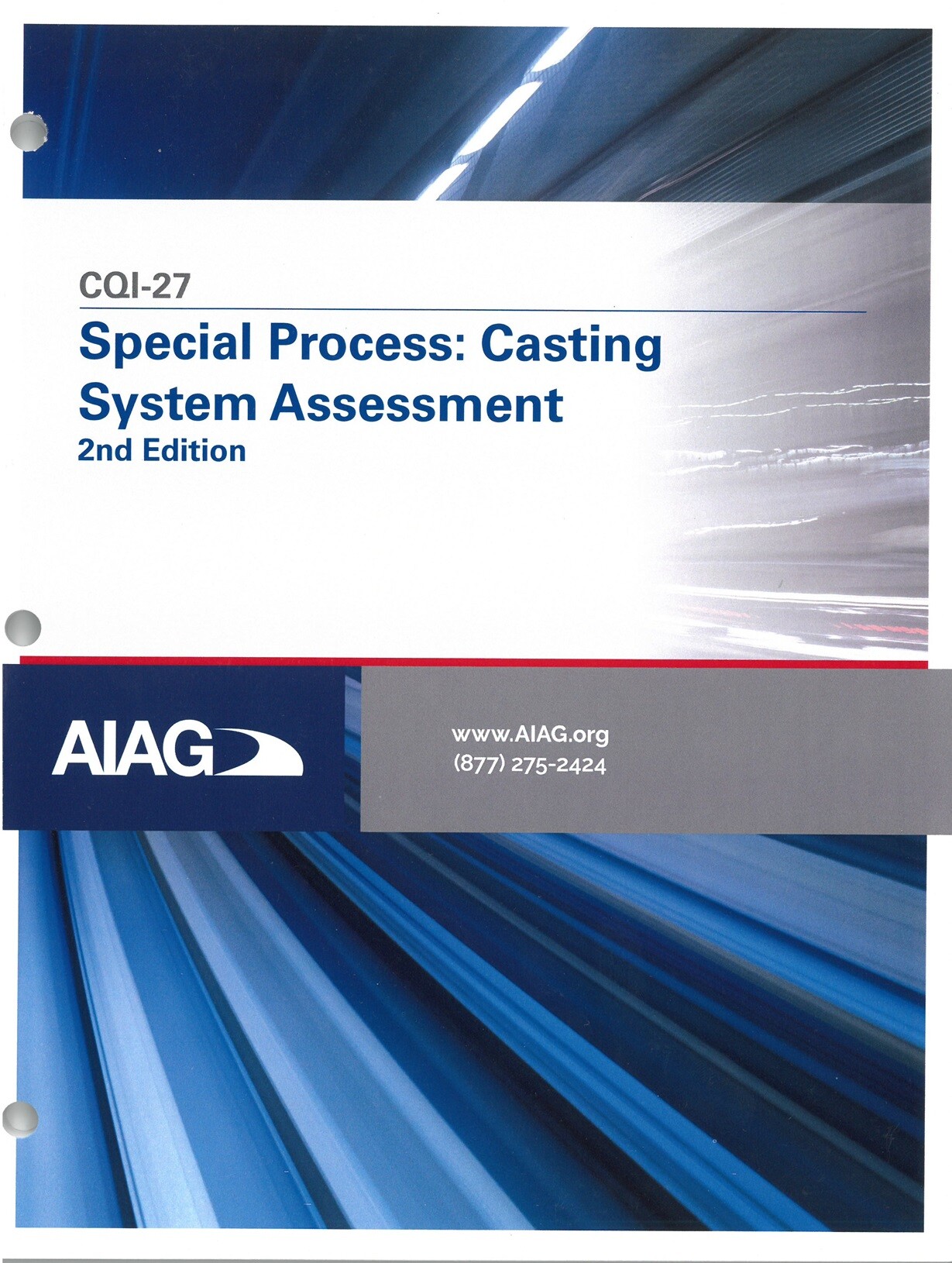CQI Standards
CQI manuals
refer to documents created and published by the AIAG (Automotive Industry Action Group) that provide guidelines, best practices, and standardized approaches related to quality management in the automotive industry. CQI stands for "Continuous Quality Improvement" and the manuals are part of AIAG's efforts to promote excellence and consistency in automotive manufacturing and supply chain processes.
The CQI manuals cover various aspects of quality management, focusing on specific topics relevant to the automotive sector.
These manuals are typically used by automotive manufacturers, suppliers, and other stakeholders as reference guides for implementing and maintaining quality management systems. They help ensure consistency in processes, reduce defects, and meet the high-quality standards expected in the automotive industry. Companies in the automotive supply chain often use these manuals as part of their efforts to comply with industry standards and customer requirements.
Key Principles of CQI
-
Customer Focus:
- Prioritize customer needs and expectations.
- Use customer feedback to drive improvements.
-
Employee Involvement:
- Engage all employees in quality improvement efforts.
- Foster a culture where everyone contributes to quality.
-
Process-Centric Approach:
- View activities as interconnected processes.
- Optimize and align processes to achieve better outcomes.
-
Data-Driven Decision Making:
- Base decisions on accurate and relevant data.
- Use statistical tools to analyze and interpret data.
-
Systematic Approach to Improvement:
- Follow structured methodologies like Plan-Do-Check-Act (PDCA).
- Implement iterative cycles of planning, executing, reviewing, and refining.
-
Integrated System:
- Ensure all components of the organization are aligned towards quality goals.
- Promote a holistic approach to quality management.
-
Sustainability:
- Focus on long-term improvements rather than quick fixes.
- Ensure changes are sustainable and continuously beneficial.
Common Frameworks and Tools in CQI
-
Plan-Do-Check-Act (PDCA):
- Plan: Identify an area for improvement and develop a plan.
- Do: Implement the plan on a small scale.
- Check: Evaluate the results of the implementation.
- Act: If successful, implement on a larger scale; if not, refine and repeat.
-
Six Sigma:
- A method that uses statistical tools to identify and eliminate defects.
- Focuses on reducing variability and improving process capability.
-
Lean:
- A methodology that aims to maximize value by eliminating waste.
- Enhances efficiency and effectiveness in processes.
-
Total Quality Management (TQM):
- An organization-wide approach to embedding quality in every aspect.
- Emphasizes customer satisfaction, employee involvement, and continuous improvement.
-
Benchmarking:
- Comparing organizational processes and performance metrics to industry best practices.
- Identifying areas where the organization can improve.
All CQI manuals are in stock, here are some of most popular CQI standards
CQI-9-4
Special Process: Heat Treat System Assessment
CQI-12-3
Special Process: Coating System Assessment
CQI-14-4
Automotive Warranty Management
CQI-15-2
Special Process: Welding System Assessment
CQI-17-2
Special Process: Electronic Assembly Manufacturing-Soldering
Steps to Implementing CQI
-
Assessment:
- Conduct a thorough evaluation of current processes and performance.
- Identify strengths, weaknesses, and areas for improvement.
-
Goal Setting:
- Define clear, measurable quality improvement goals.
- Align goals with organizational objectives and customer needs.
-
Training and Development:
- Train employees on CQI principles, tools, and techniques.
- Develop skills necessary for quality improvement.
-
Process Mapping and Analysis:
- Document and analyze existing processes to identify inefficiencies.
- Use tools like flowcharts and cause-and-effect diagrams.
-
Implementing Improvements:
- Apply chosen CQI methodologies to implement improvements.
- Pilot changes on a small scale before full implementation.
-
Monitoring and Evaluation:
- Continuously monitor processes and measure outcomes.
- Use key performance indicators (KPIs) to track progress.
-
Feedback and Refinement:
- Collect feedback from stakeholders and employees.
- Refine and adjust processes based on feedback and performance data.
Benefits of CQI
- Enhanced Quality: Improved products and services meet or exceed customer expectations.
- Increased Efficiency: Streamlined processes reduce waste and increase productivity.
- Customer Satisfaction: Higher quality and reliability lead to greater customer loyalty.
- Employee Engagement: Involving employees in improvement efforts boosts morale and job satisfaction.
- Competitive Advantage: Continuous improvements help organizations stay ahead in the market.
By embedding CQI standards into their operations, organizations can foster a culture of ongoing improvement, adaptability, and excellence, ultimately leading to sustained success and growth.
Price exclude VAT will be charged for customers of European Union – VAT payers (with valid EU VAT number) and for customers outside of European Union.
Design Review Based on Failure Modes (DRBFM Reference Guide)
Special Process: Brazing System Assessment
Effective Error-Proofing
Effective Problem Solving Practitioners Guide
Special Process: Plating System Assessment
AIAG Traceability Guideline
Cost of Poor Quality Guide
Special Process: Molding System Assessment
Advanced Product Quality Planning (APQP) Reference Manual


